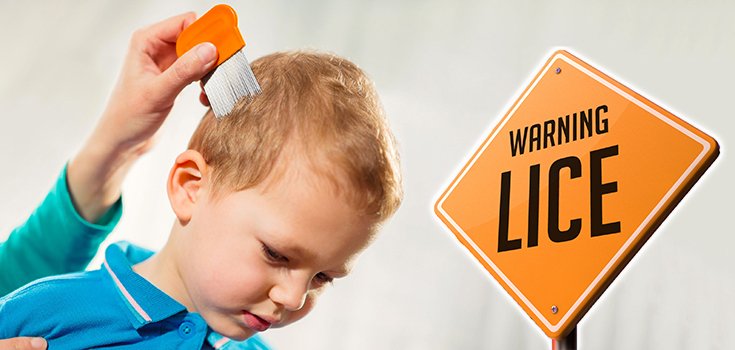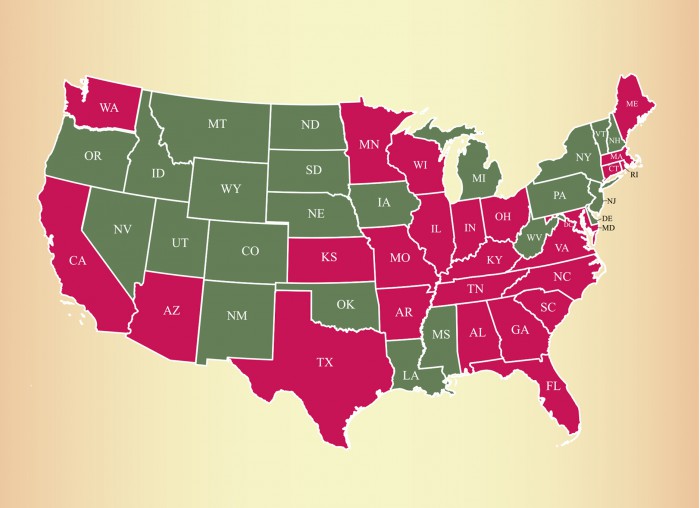Pesticide Overuse Has Led to a Huge “Super Lice” Outbreak

Don’t freak out, but “super lice” resistant to the pesticides commonly used to kill them are marching across the United States. They’re not going to kill you, they’re just really gross, they make you itch, and if you’re a parent, they could challenge your sanity.

So far, the super lice outbreak, which began last year, has spread across 25 states, and it exists because the chemical treatments used to get rid of the pests have been overused. The bugs can’t be killed using pyrethroids, the traditional method of treatment. [1]
A 2014 study by the University of California, Davis, showed that of the urinary samples taken from adults and children in 90 California families, 2/3 had breakdown products of pyrethroids. In 2009, the Environmental Protection Agency (EPA) found pyrethroids in more than 3,500 registered commercial products. [2]
According to Beyond Pesticides’ Chemical Watch card, pyrethroids are a synthetic version of a chrysanthemum extract, which are designed to be more toxic and take longer to break down. The chemicals used to be 100% effective against lice, but now they only work about 25% of the time.
Pyrethroids are not terribly safe, either, but I’ll get into that later.
Daniel McCrimons, a pediatrician in Sacramento, California, told Good magazine:
“The lice themselves have sort of built up a resistance to conventional over-the-counter treatments that most patients use for the treatments.”
Things have gotten so bad that parents are practically going bald – not from a lice infestation, but from ripping out their own hair in frustration. Kids are experiencing infestation after infestation, leading parents to take them to lice clinics, where the insects are killed via dehydration.
These clinics use AirAlle, a treatment recently approved by the Food and Drug Administration (FDA), which uses heated air to kill the little buggers and their eggs in about an hour. Usually, just one treatment is needed. But it’ll cost ya: Lice Clinics of America charges around $170. [3]
However, if you have the cash, AirAlle is a lot safer than pyrethroids. Pyrethroids are toxic to humans and dogs, and can be lethal to cats. The chemicals can harm the nervous system and, at high amounts, can cause headaches, breathing difficulty, nausea and vomiting. [4]
Also, according to Chemical Watch card, pyrethroids are endocrine disruptors which have been linked to breast cancer, and may adversely affect reproduction and sexual development, and interfere with the immune system. [5]
Some research suggests that pyrethroids may negatively affect kids’ behavior. A 2014 study on Canadian children found that exposure to the pesticides were linked to behavioral problems reported by parents.
They’re not nice to the environment either, having been shown to potentially kill bees, birds, fish, and other water-dwelling creatures.
If you’re worried about the crazy, mutant super lice invading your child’s scalp and you’d rather not smear a possible human carcinogen over his or her head, here are a few tips for preventing an infestation, as well as some home remedies for head lice:
- Teach your children not to share combs, brushes, pillows, hats, or helmets.
- The idea of bugs in your child’s hair might give you the overwhelming urge to shampoo them until foam comes out of their noses when they sneeze, but squeaky-clean hair is easier for lice to attach their eggs to.
- Nit-pick. Like, in the literal sense. This isn’t the time to nag Junior about his grades or Suzy about her taste in boys. Get a comb and physically look for lice. Seek and destroy, moms and pops. It takes a while, but at least it’s chemical-free.
- If you see hair on the floor or on the furniture, vacuum it up. Wash human bedding in hot water. Toss animal bedding and clothing in a hot dryer for 20-30 minutes.
Sources:
[1] Good
[2] The Verge
[3] New York Post

Don’t use any poison. Use gooey hair conditioners and suffocate them. I consider myself an expert on this topic as a school teacher and mother. I used to put poison on my head constantly and almost gave myself a heart attack. No, exaggeration. I started having some kind of attack after using these products too much.
I now use Queen Helene Cholestrerol Hair Conditioning Cream. You can use any thick gooey hair product but some will burn your head if you leave them on too long. I’m guessing you could probably use coconut oil also but use lots. Smash handfuls of the goop in your hair. I always start at the back neck hairline and around the ears because lice love these areas. Goop it on all over the head and all through the hair. Pile it up and tie the head up in a plastic grocery bag. I tie my knot right on top of my forehead in the center because it works best for me. Then I plop a knit hat on and spend the next 24 to 48 hours in it.
No, it’s not fun but much better than putting poison on yourself of your small children. I’ve dealt with these super lice before also. Smothering them will work and you never have to worry if the lice you have are immune to the poison because that happens a lot.
Of course, you still have to wash everything and you will probably have to put spray poison on upholstery as vacuuming alone rarely does it.
ONe more important tip: These new energy efficient dryers and washers will not get rid of lice like the old ones did. In fact, my next pair will be used old ones for this reason alone. I found this out the hard way. Now I have to put blankets, pillows, and clothes in tightly shut plastic bags for a least a week. I then throw them in the garage or on the deck if it’s freezing. If it’s cold and winter you can throw them out on the deck or patio and the lice will be dead in a night if it’s freezing. However, not just a few hours of freezing will do. You need a long full night of freezing temps. A few hours at 32 degrees or close will not do it. Also, in super hot weather you can throw this stuff in the trunk of your car and the heat will kill them. It has to be very hot though. It should be at least above 90 degrees outside of the car. I would keep the stuff in there two or three days.